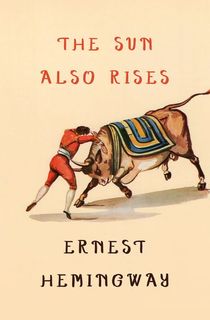There are few writers more legendary than Ernest Hemingway. Beginning as a journalist, Hemingway exploded onto the literary scene in the wake of the First World War, telling stories of soldiers, bullfights, love, death, and fishing with the terseness of someone trained to watch column inches, but the symbolism and thematic density of a poet. The result was one of the most revered writers of the 20th century, a man whose own life reflected his work in often thrilling and sometimes tragic ways.
An ambulance driver during World War I, Hemingway was present at the Allied invasion of Normandy in World War II. In between, he wrote some of the most celebrated novels and short stories in modern letters. He was awarded the Pulitzer Prize for Fiction in 1953 and the Nobel Prize in Literature in 1954. Despite these and many other accomplishments, however, Hemingway suffered from a grievous depression and, in 1961, in his home in Ketchum, Idaho, he took his own life with his favorite shotgun.
Though Hemingway was gone, he left behind numerous books – those he had published during his lifetime, and those that remained to be published after his death – and his legacy remains one of the most robust in American letters. For those looking for a place to start with the legendary author, or those who are Hemingway fanatics who can’t get enough, these 14 books are must-reads, ranging from the author’s best-known works to early collections of short stories and vignettes that show the beginnings of a monumental talent.
Ernest Hemingway Novels
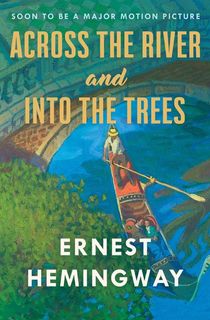
Across the River and Into the Trees
The last novel that Ernest Hemingway published before his death, Across the River and Into the Trees may today be less well-known than some of his other classics, but at the time of its publication it was the only one of his books to top the New York Times bestseller list.
A story about facing death, Across the River and Into the Trees tells of a love affair between an Army officer and a much-younger Italian noblewoman at the end of the World War II. It was partly inspired by a trip that Hemingway himself took to Venice, a city that he loved, and has in turn inspired a movie adaptation starring Liv Schrieber.
The Sun Also Rises
Though Hemingway is renowned for both his short stories and his journalism, his greatest fame as a writer comes from his novels. And among these, few are as legendary as this “truly gripping” (New York Times) tale of the Lost Generation, of people damaged and wounded – literally and otherwise – by the Great War, who seek solace in Spain the 1920s.
Read it to see why it is often considered Hemingway’s most important novel, and why the Wall Street Journal calls it “the ideal companion for troubled times.”
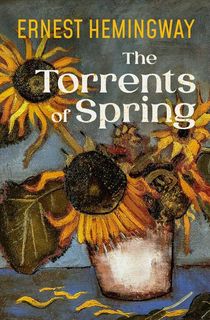
The Torrents of Spring
While Hemingway is often seen as a “serious” writer, The Torrents of Spring shows another side of him, as he pens an early novella satirizing other writers and their literary pretensions. The Torrents of Spring is also a story about love, how it is found, how it is lost, and how fickle it can be.
While it was initially rejected by Hemingway’s publishers, F. Scott Fitzgerald is said to have praised it as a “masterpiece,” and it certainly shows a more humorous side of Hemingway’s writing than is present in many of his more famous stories.

The Old Man and the Sea
It is almost impossible to single out one particular story from Hemingway’s monumental oeuvre, but if one had to do so, The Old Man and the Sea might be his most legendary. The last major literary work released during Hemingway’s lifetime, The Old Man and the Sea won him the Pulitzer Prize in 1953 and was the only one of his works mentioned by name when he received the Nobel Prize in Literature in 1954.
The story of an old fisherman’s attempts to catch a massive marlin is one of Hemingway’s most familiar, and no reading of his works would be complete without it.
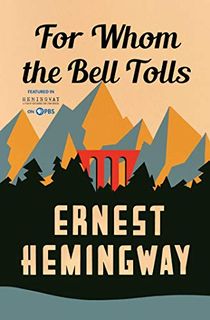
For Whom the Bell Tolls
One of Hemingway’s most famous and important novels, For Whom the Bell Tolls is a tale of the Spanish Civil War, published in 1940, the same year he married war correspondent Martha Gellhorn and one year before the United States had officially entered World War II.
Within just three years, it was adapted into a major motion picture starring Gary Cooper and Ingrid Bergman, and it has gone down in history as one of Hemingway’s best-known books, while also ensuring that John Donne’s 1624 verses from which it takes its title have become immortalized in the popular imagination.
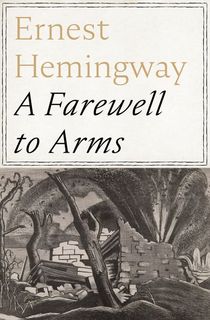
A Farewell to Arms
Hemingway’s first bestseller, A Farewell to Arms has been called “the premier American war novel” of the First World War. Like many of Hemingway’s works, it is based partly on his own experiences, in this case his time as an ambulance driver during World War I.
It was adapted to the screen in 1932, starring Gary Cooper and Helen Hayes. Its story of the love between an American officer directing ambulance drivers for the Italian army and a nurse has become one of the most famous war stories of the 20th century.
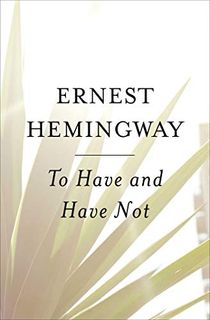
To Have and Have Not
One of Hemingway’s most controversial novels – and the first to be set in the United States – To Have and Have Not chronicles the lives of both the “Have’s” and the “Have Not’s” who make their homes in Florida’s Key West, a place where Hemingway himself lived.
As the Great Depression forces working folks into desperation and crime, the book is interspersed with depictions of the lavish lifestyles led by the “Have’s” on their yachts.

Islands in the Stream
The first novel published posthumously after Hemingway’s death, Islands in the Stream was made up of what Hemingway had called a “sea trilogy” that he had been working on toward the end of his life. As such, the novel is broken up into three sections, set at different points in its protagonist’s life, and in different places, including Bimini, Cuba, and out at sea. Elements from the story echo some of Hemingway’s best-known books, including A Farewell to Arms and The Old Man and the Sea.
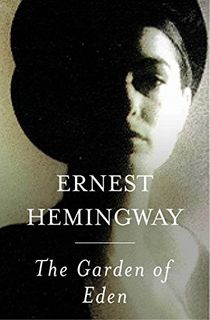
The Garden of Eden
When Hemingway took his own life, he left behind more than 300 manuscripts of various works in progress. Of these, the most ambitious was published much later as The Garden of Eden, a sprawling novel cataloguing five months in the lives of an American writer and his wife in the French Riviera.
Though the book had to be edited together from several drafts left behind after Hemingway’s death, it is considered one of his boldest works, addressing gender roles and the creative process, and was included in Harold Bloom’s list of books comprising the Western literary canon.
Ernest Hemingway Short Stories
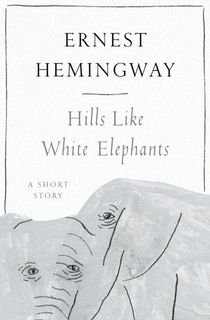
Hills Like White Elephants
Hemingway’s style is often described using what is known as “Iceberg Theory” – that the seemingly trivial facts of the story lie on the surface, while all the themes and symbolism take place out of sight.
Few stories are a better example of this than “Hills Like White Elephants,” one of the writer’s most celebrated short stories, in which a couple’s discussion at a train station will have an enormous impact on their future. While the interpretations of the story are many, that it is one of Hemingway’s best-known tales is undeniable.

Three Stories and Ten Poems
Even before he published In Our Time, his first official short story collection, Hemingway had released this privately published assembly of tales and poems, initially limited to only around 300 copies.
In and out of print ever since, Three Stories & Ten Poems showcases some of Hemingway’s earliest literary work, and is therefore invaluable to anyone who wants to see where the Nobel Prize-winning author got his start.
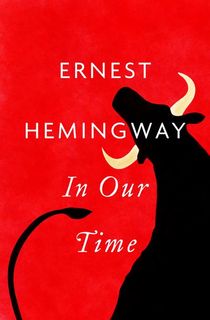
In Our Time
One of Hemingway’s earliest collections of short stories, In Our Time shows the author developing the “fibrous and athletic” (New York Times) grasp of language that would help him make his indelible mark on literary history.
Across several short stories and vignettes – including a handful of Hemingway’s early Nick Adams stories – readers are treated to a glimpse into the development of a literary titan. Everything that would come to define Hemingway’s prodigious output has its roots here, from stories of war and bullfights to Hemingway’s unmistakable style of storytelling.
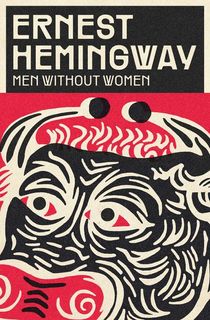
Men Without Women
Hemingway’s second major short story collection, Men Without Women, features some of the author’s most celebrated tales.
Among them are “Hills Like White Elephants,” “The Undefeated,” “In Another Country,” and “The Killers,” which is not only one of Hemingway’s most oft-reprinted short stories, but has also been adapted several times to film, including in 1946, starring Burt Lancaster and Ava Gardner, and again in 1964, starring Lee Marvin, Angie Dickinson, Clu Gulager, John Cassavetes, and none other than former president (not yet president at the time) Ronald Reagan.
Ernest Hemingway Nonfiction Books
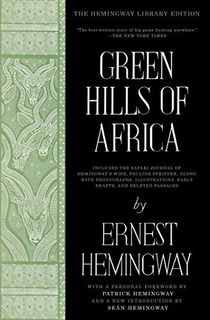
Green Hills of Africa
First published in 1935, Green Hills of Africa lyrically explores Hemingway’s safari through East Africa with his wife, Pauline Pfeiffer, in December of 1933. Not only is Hemingway’s widely known fascination of big-game hunting featured in the novel, but it also features a seamless, somewhat social commentary on the lure of the hunt and the eventual destruction of a (not for long) untouched wilderness by man.
As do many of his works, this one looks inward, using a beautiful display of imagery to illustrate his innermost thoughts and feelings of the world around him.
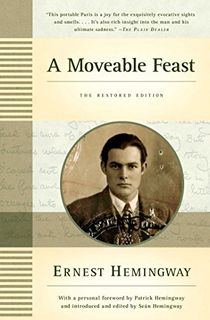
A Moveable Feast
While Hemingway may be best known as a novelist, he got his start in journalism, and his nonfiction is every bit as memorable and scintillating as his novels and short stories. A Moveable Feast is the most recognizable of these, a memoir of Hemingway’s time in Paris in the 1920s that was published after his death.
Besides an unforgettable portrait of a city and a moment in time, A Moveable Feast also features anecdotes starring the numerous notable figures of the time whom Hemingway knew, including F. Scott Fitzgerald, Aleister Crowley, Gertrude Stein, James Joyce, Ezra Pound, and many more.
Featured image: Pawel Czerwinski / Unsplash

